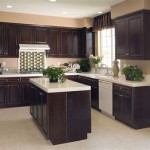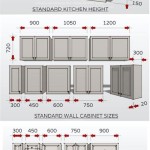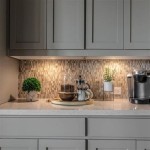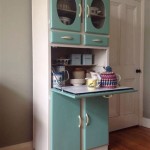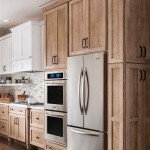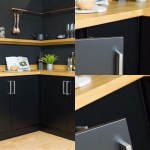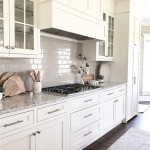Shelf Liner for Kitchen Cabinets: Essential Aspects
Shelf liner is an essential component of any organized and functional kitchen. It not only protects your cabinets from scratches and spills but also enhances their appearance and functionality. With a wide variety of materials and styles available, choosing the right shelf liner can be a daunting task. Here's a guide to help you understand the key aspects of shelf liner for kitchen cabinets:
Types of Shelf Liner Materials
Vinyl: Vinyl is the most common type of shelf liner due to its durability, ease of cleaning, and affordability. It comes in a variety of colors and patterns to match your kitchen decor.
Silicone: Silicone is another popular choice for its non-slip properties, making it ideal for storing cookware and dishes. It is also heat resistant, making it suitable for use in areas near heat sources.
Fabric: Fabric shelf liners add a touch of warmth and texture to your cabinets. While not as durable as vinyl or silicone, they are often used to cushion delicate items and prevent scratching.
Cork: Cork is a natural and sustainable option that provides excellent insulation and cushioning. It is a good choice for storing fragile items.
Paper: Paper shelf liners are an inexpensive option for temporary use. However, they are not very durable and may need to be replaced frequently.
Choosing the Right Thickness
The thickness of the shelf liner is also crucial. Thinner liners are easier to apply and conform to the shape of your cabinets, while thicker liners provide more protection and cushioning.
For general use, a thickness of 0.015 inches to 0.020 inches is sufficient. For heavier items or items that require more protection, a thickness of 0.030 inches or more is recommended.
Non-Adhesive vs. Adhesive Shelf Liner
Shelf liners come in both non-adhesive and adhesive varieties. Non-adhesive liners stay in place through friction and can be easily removed and repositioned.
Adhesive liners, on the other hand, are more permanent and create a stronger bond with the surface. They are suitable for areas that require extra grip or for storing heavy items.
Style and Color
Shelf liner is available in a wide range of colors and patterns to match any kitchen decor. You can choose from plain colors, grid patterns, decorative designs, and even custom-printed options.
Consider the overall style of your kitchen and the existing cabinet finishes when choosing the color and pattern of your shelf liner.
Additional Features
Some shelf liners offer additional features to enhance functionality, such as:
- Anti-microbial properties to inhibit the growth of bacteria and mold
- Anti-slip coating for added grip
- Waterproof and heat-resistant materials for durability
Conclusion
Choosing the right shelf liner for your kitchen cabinets involves considering factors such as material, thickness, adhesive type, style, and additional features. By understanding these aspects, you can select the optimal shelf liner that not only protects your cabinets but also complements your kitchen's functionality and aesthetics.

Simple Diy Drawer And Shelf Liners

8 Pros And Cons Of Kitchen Cabinet Shelf Liners Everyday Old House

Simple Diy Drawer And Shelf Liners

Does Shelf Liner Really Extend The Life Of Cabinets Drawers

Shelf Liners Kitchen Accessories That Escape Your Attention

8 Reasons You Should Use Shelf Liner In Your Kitchen Jam Organizing Wilmington Nc

How To Choose The Best Kitchen Shelf Liner 7 Tips Everyday Old House

4 Uses For Easyliner Brand Shelf Liner In The Kitchen Duck

Follow Sierracalah For More Inspiration Kitchen Shelf Liner Inside Cabinets Cabinet Liners

Shelf Liners At Com
Related Posts


